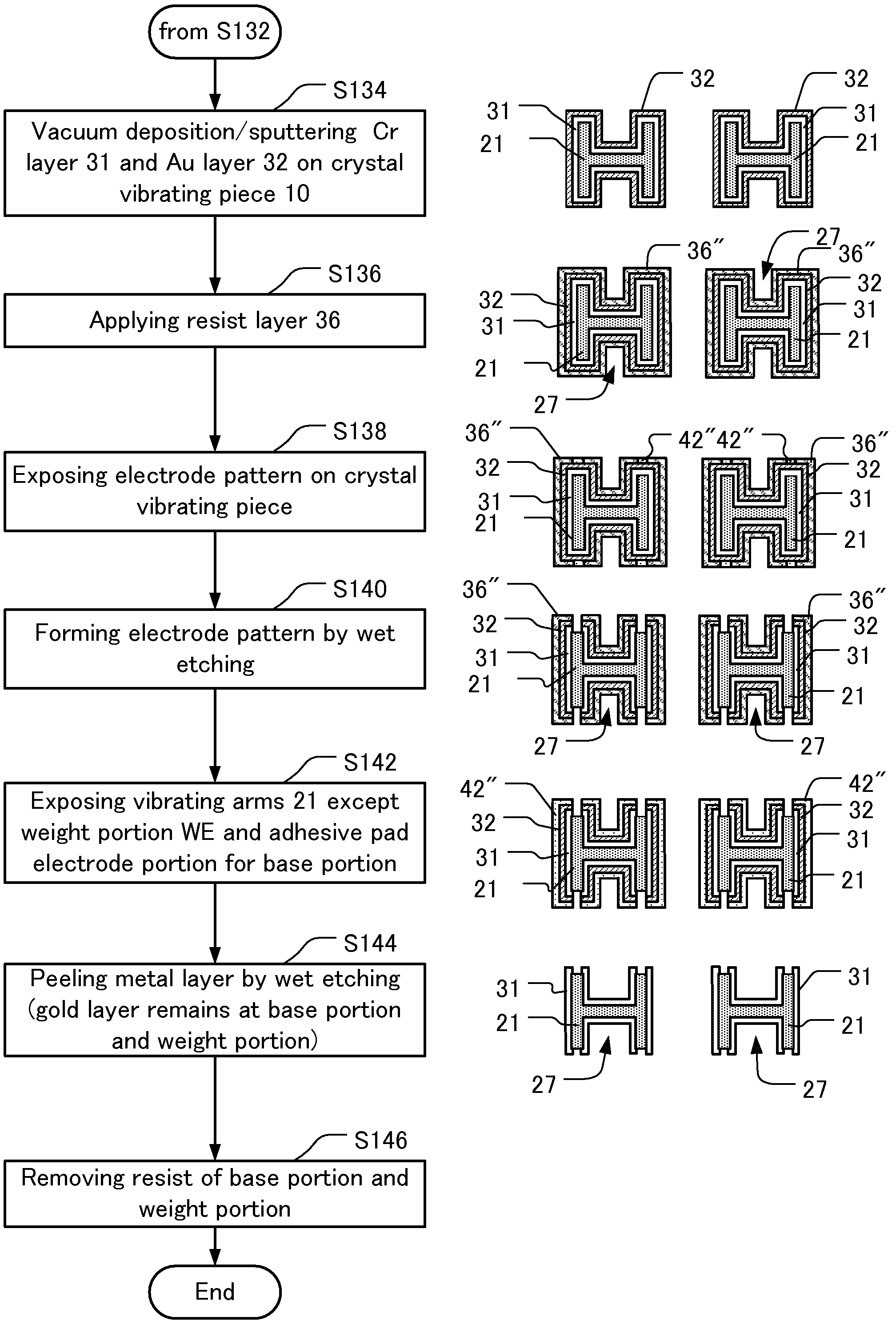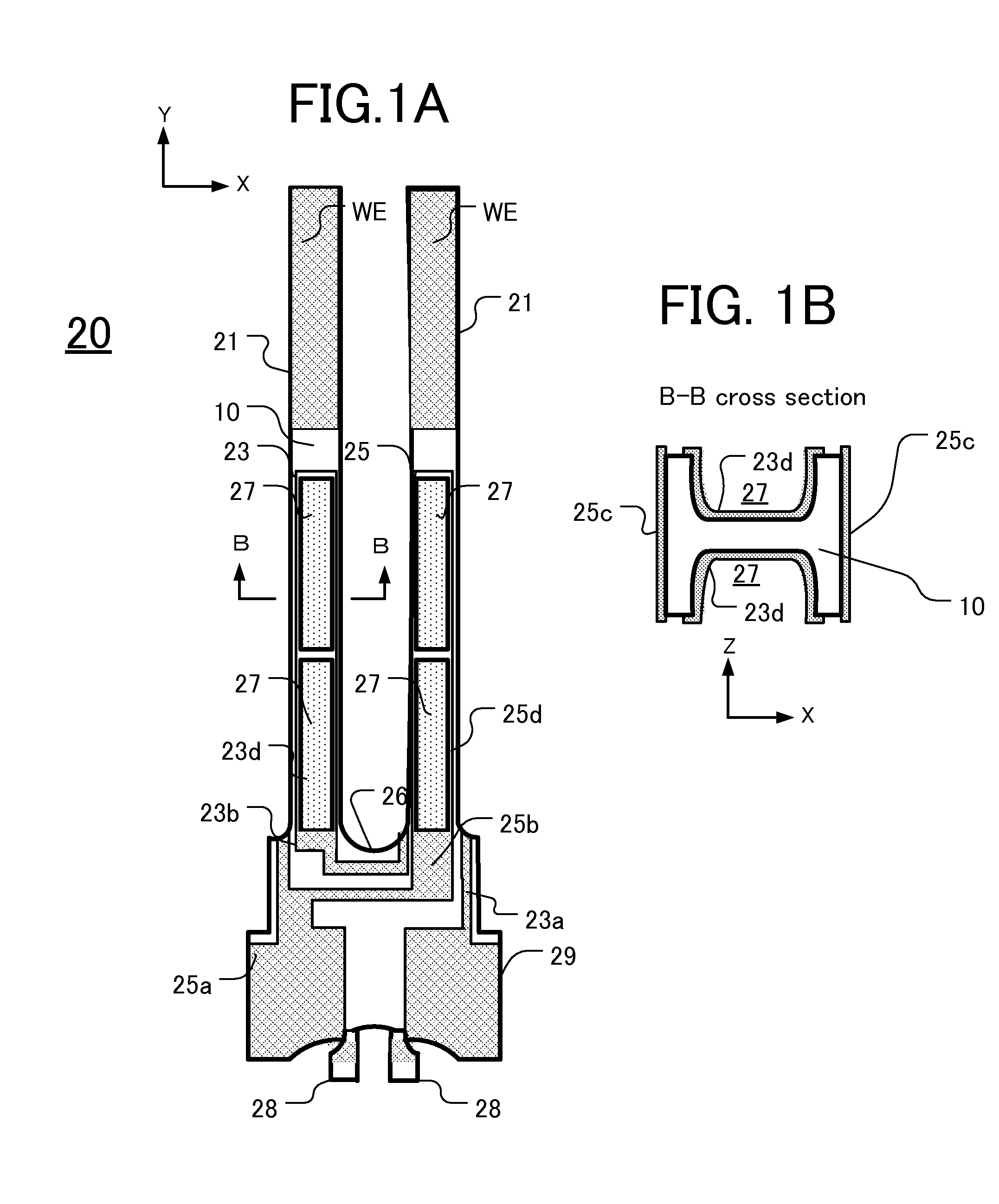Methods for manufacturing tuning-fork type piezoelectric vibrating devices
a piezoelectric vibrating device and tuning fork technology, applied in the direction of generator/motor, device material selection, instruments, etc., can solve the problems of unfavorable vibration frequency and/or ci value fluctuation otherwise caused by the different coefficients of thermal expansion, and frequency fluctuations. , the effect of reducing the fluctuation of vibration frequency and/or ci valu
- Summary
- Abstract
- Description
- Claims
- Application Information
AI Technical Summary
Benefits of technology
Problems solved by technology
Method used
Image
Examples
Embodiment Construction
Tuning-Fork Type Crystal Vibrating Device 20
[0025]FIG. 1A is a schematic depiction of the configuration of an embodiment of a tuning-fork type crystal vibrating device 20, and FIG. 1B is a cross-sectional view along the line B-B of FIG. 1A. The line B-B extends across one of the vibrating arms 21 of the device 20. To achieve the required degree of miniaturization and high quality, as shown in FIG. 1A, the device 20 comprises a base 29 and a pair of vibrating arms 21 extending from the base 29. The arms extend parallel to each other, in a tuning-fork configuration, from a top edge of the base 29. A crotch portion 26 of the pair of arms 21 includes a tapered or rounded region that reduces changes in or fluctuation of the resonance frequency of the arms that otherwise would be caused by ambient temperature changes. A V-shaped crotch portion 26 provides the tapered region, and a U-shaped crotch portion 26 (shown) provides the rounded region. This embodiment is described below with refer...
PUM
| Property | Measurement | Unit |
|---|---|---|
| vibration frequency | aaaaa | aaaaa |
| diameter | aaaaa | aaaaa |
| thickness | aaaaa | aaaaa |
Abstract
Description
Claims
Application Information
 Login to View More
Login to View More - R&D
- Intellectual Property
- Life Sciences
- Materials
- Tech Scout
- Unparalleled Data Quality
- Higher Quality Content
- 60% Fewer Hallucinations
Browse by: Latest US Patents, China's latest patents, Technical Efficacy Thesaurus, Application Domain, Technology Topic, Popular Technical Reports.
© 2025 PatSnap. All rights reserved.Legal|Privacy policy|Modern Slavery Act Transparency Statement|Sitemap|About US| Contact US: help@patsnap.com



